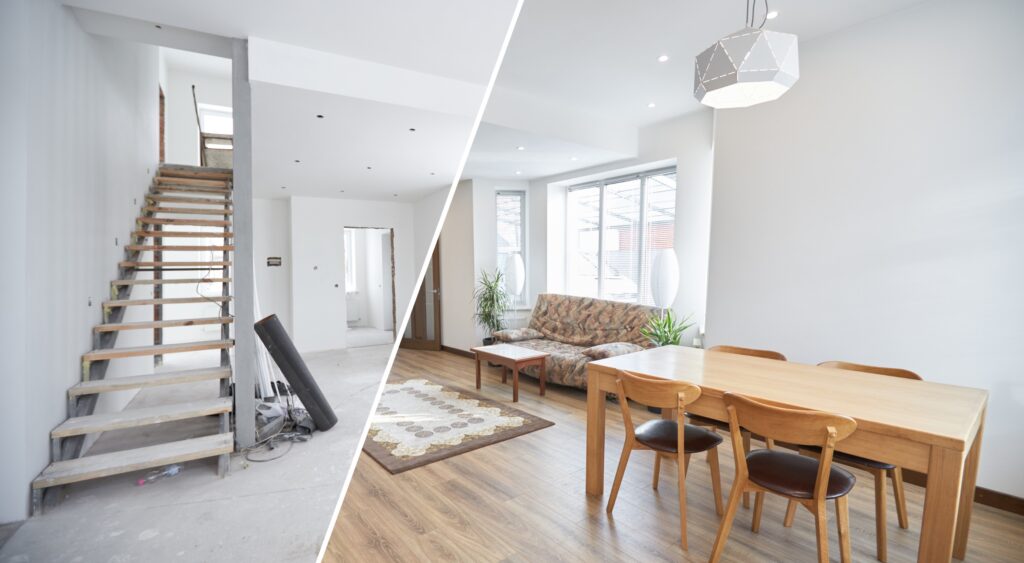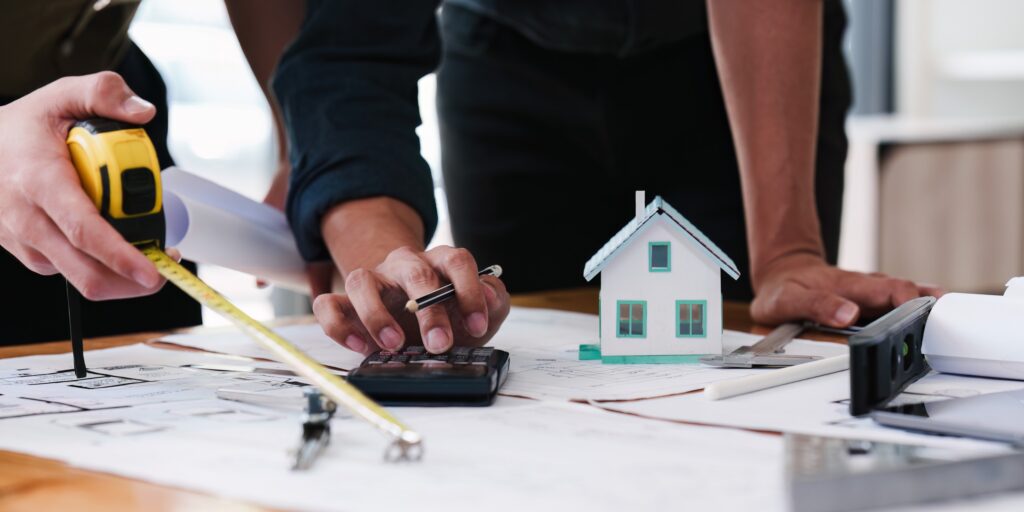By Glenn and Amber
Have you ever wondered how house flipping works? In this comprehensive guide, we will delve into the process of flipping houses, from finding the right property to budgeting for renovations and avoiding common mistakes. We will provide valuable insights and tips based on our experiences as successful house flippers. So, let’s dive in and uncover the secrets of this lucrative venture.

The Flipping Process: Find, Fund, Fix, and Flip

Budgeting for Success
One of the key factors in ensuring a profitable flip is effective budgeting. Knowing your costs upfront is essential. We recommend using tools like the home flipping evaluator to estimate expenses accurately. This knowledge allows you to make an informed initial offer on the property, ensuring you have enough funds to cover renovations and generate a significant profit. It’s crucial to track your daily expenses throughout the project. Avoid throwing receipts into a basket and dealing with them later. Instead, maintain a detailed spreadsheet or use software like Quickbooks to monitor expenses. By regularly reviewing your budget and costs, you can make informed decisions and manage your cash flow effectively.
Numbers tell a story, so make sure you're counting all your cost. - Amberc
Renovation Tips for Maximum Value
To maximize the value of your property, it’s important to focus on renovations that provide the most impact. Our motto has always been to take a $150,000 house and make it feel like a $300,000 house. Achieving this requires attention to detail and strategic choices. Simple additions like crown molding on kitchen cabinets, adding hardware, and a backsplash can elevate the overall look and feel of the space. Investing in a statement chandelier for the dining room or adding a microwave above the stove instead of a vent hood can make a significant difference. Opening up walls to create an open-concept layout is another cost-effective way to enhance the property’s appeal. Remember, an investor must consider the return on investment (ROI) for each renovation decision. These minor upgrades can yield substantial returns, making your property appear more valuable than it is.
Those examples she gave are amazing ways to make something look and feel ten times more valuable than it is. - Glenn
Staging and Marketing: Captivating Potential Buyers
In today’s digital age, staging and marketing play a crucial role in selling your flip. Gone are the days when people drove around neighborhoods looking for “For Sale” signs. Online presence is paramount; captivating photos are essential to attract potential buyers. Neutral colors used in renovations can sometimes appear cold and empty in photos. To counter this, consider adding curtains, small tables, greenery, or lamps to warm up the space. Virtual staging also allows you to showcase the property’s potential without investing in physical furniture. However, for high-end houses, it may be worth investing in professional staging to create a captivating experience for potential buyers. Additionally, if any rooms may confuse buyers, such as small nooks or unconventional spaces, stage them to highlight their potential purpose. By effectively staging and marketing your flip, you can minimize the sales cycle and potentially sell the property for a higher price.
So by staging the house properly, you are likely going to minimize the amount of time in your sales cycle, which also increases your profit. - Amber

Common Mistakes to Avoid
When flipping houses, it’s crucial to avoid common mistakes that can lead to financial losses or missed opportunities. One of the most significant mistakes is forcing a deal. It’s essential to rely on accurate numbers and avoid using “eraser math” to justify higher expenses or lower estimates. The math doesn’t lie, and trying to force a deal by manipulating the numbers will only lead to trouble. Stick to your budget and be realistic about the costs involved.
Don't use eraser math when you are estimating for your flip. Don’t kid yourself and try to say, you know what, I know that the sheet says it will be $3000 to pay, but we can probably do this for $1000. - Glenn
Another critical mistake is buying wrong. Getting caught up in bidding wars or the excitement of winning a deal is easy. However, it’s essential to set a maximum allowable offer and stick to it. Don’t let emotions drive your decisions. Always negotiate from a position of strength and avoid overpaying for a property.
Do not fight the fight just to get the deal. Because if you do that, you likely will buy the house wrong. - Glenn
Lastly, keeping your foot on the gas throughout the flipping process is vital. From closing the deal to managing contractors and ensuring a smooth sales process, you must drive the project forward. Don’t assume everyone involved will meet your expectations without your active involvement. You can maximize profits and avoid unnecessary delays by staying proactive and engaged.
When you start a project, the clock starts ticking. You have to keep your foot on the gas through all aspects. - Glenn
Conclusion and Future Outlook
Flipping houses can be a highly profitable venture if approached with careful planning and execution. By following the find, fund, fix, and flip process, budgeting effectively, making strategic renovations, and staging and marketing your property, you can increase your chances of success. Avoiding common mistakes such as forcing deals, buying wrong, and losing momentum throughout the process is crucial. As the real estate market evolves, staying informed about market trends and adapting your strategies accordingly will be key to future success in house flipping.
In conclusion, house flipping is an art that requires a combination of financial insight, creativity, and attention to detail. You can turn a modest investment into a substantial profit by mastering the process and avoiding common pitfalls. So, go out there, find the right property, secure funding, renovate strategically, and market your flip effectively. With the right approach, you can become a successful house flipper and reap the rewards of your hard work and expertise.
Recent Posts
- The Untold Realities of Wholesale Real Estate Deals: Strategies from the Pros
- Navigating Wealth and Taxes: Insights from the Fearless Future Podcast
- Mastering the Art of Real Estate Negotiation: Insider Tips for Buying Low and Selling High
- Home Ownership vs. Renting: A Candid Debate on Real Estate Investment
- Navigating Real Estate Investment Pitfalls: Lessons from a $147K Loss
Recent Comments
- Michela on Glenn’s Coaching Corner – Getting YOUR Offer Accepted
- Betty Savoca on Amber on Design – Renovation Do’s & Don’ts
- Tracy Kurtz on Amber On Design – Timeless Kitchens
- Amber on Glenn’s Coaching Corner – Getting YOUR Offer Accepted
- Amber on Amber On Design – Timeless Kitchens
Archives
Categories
